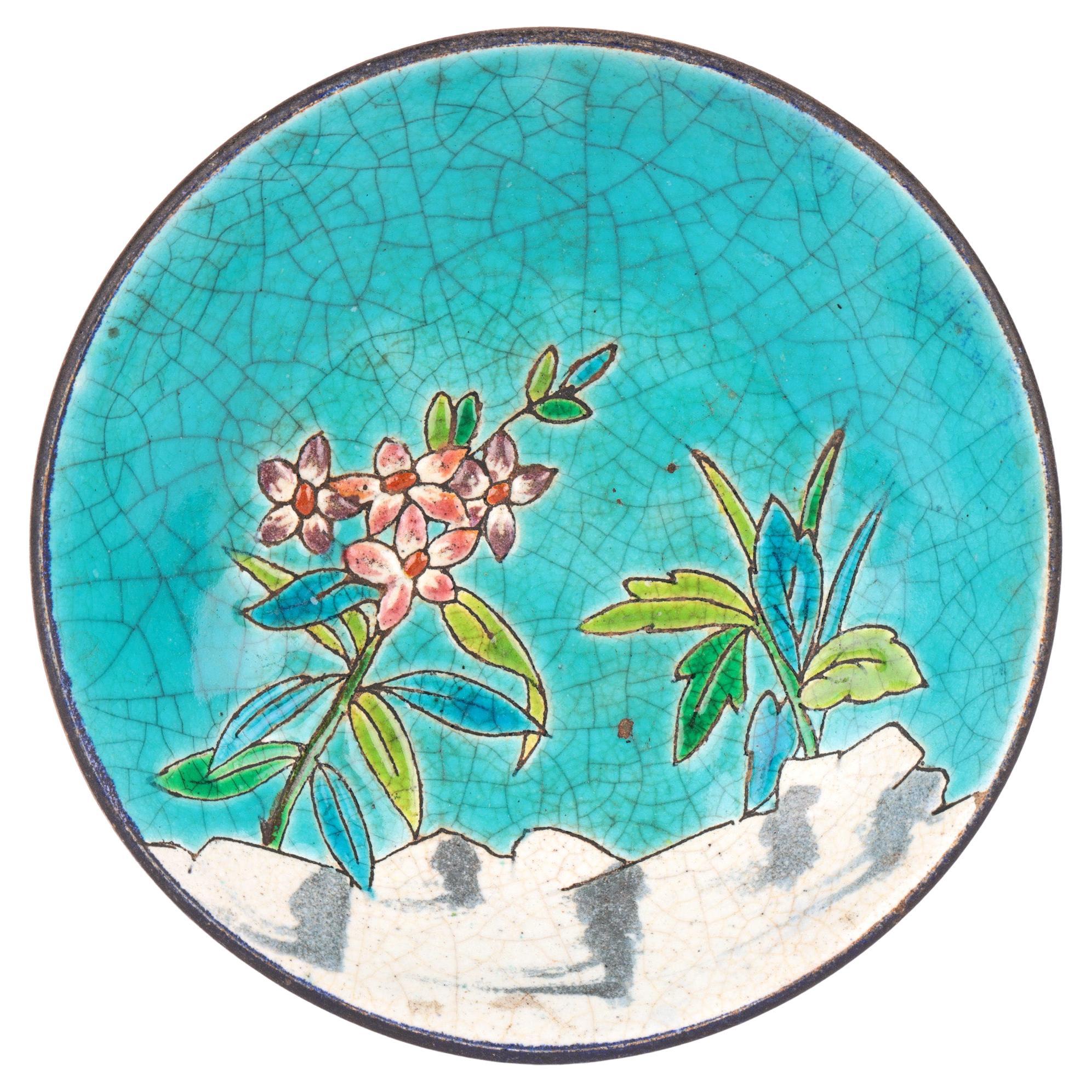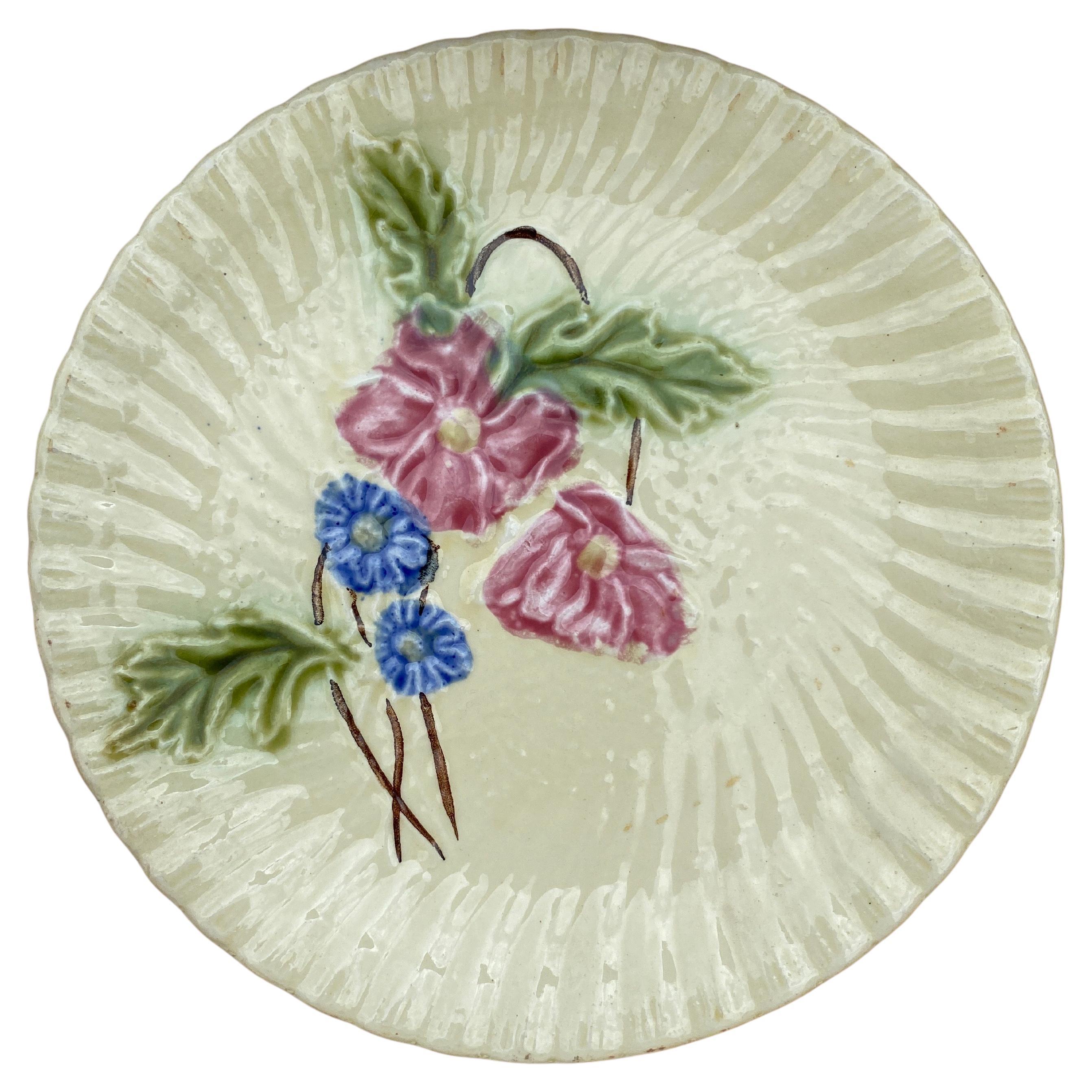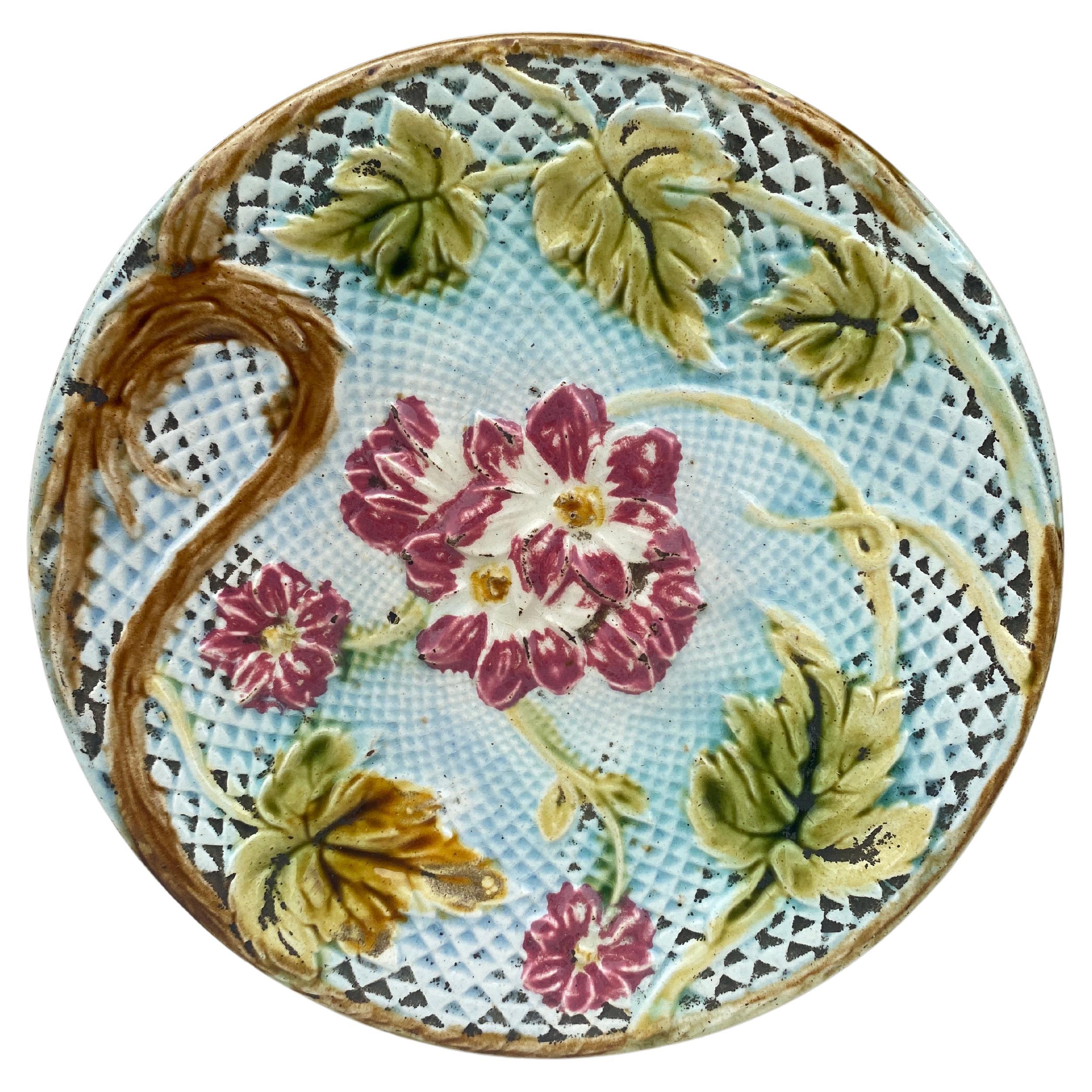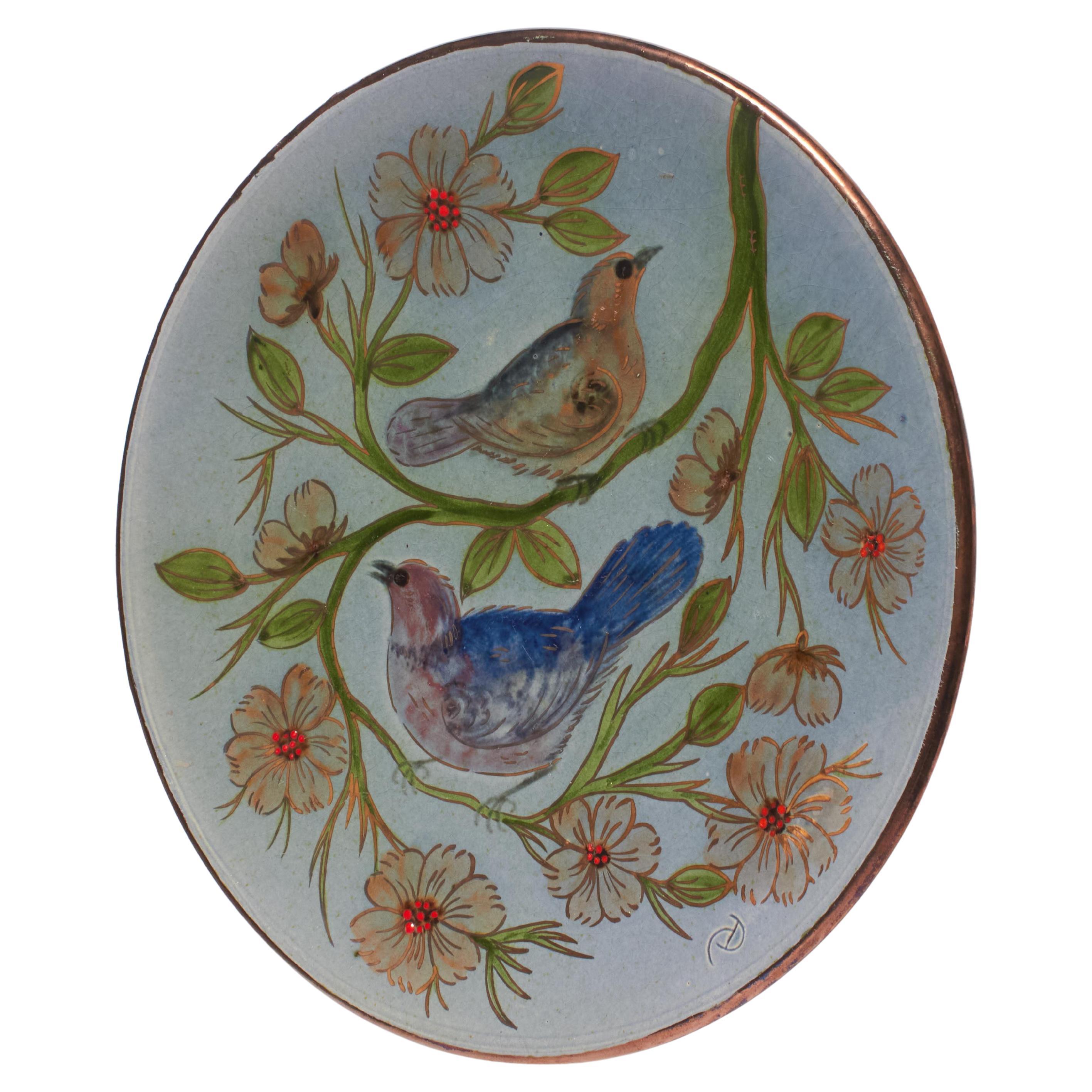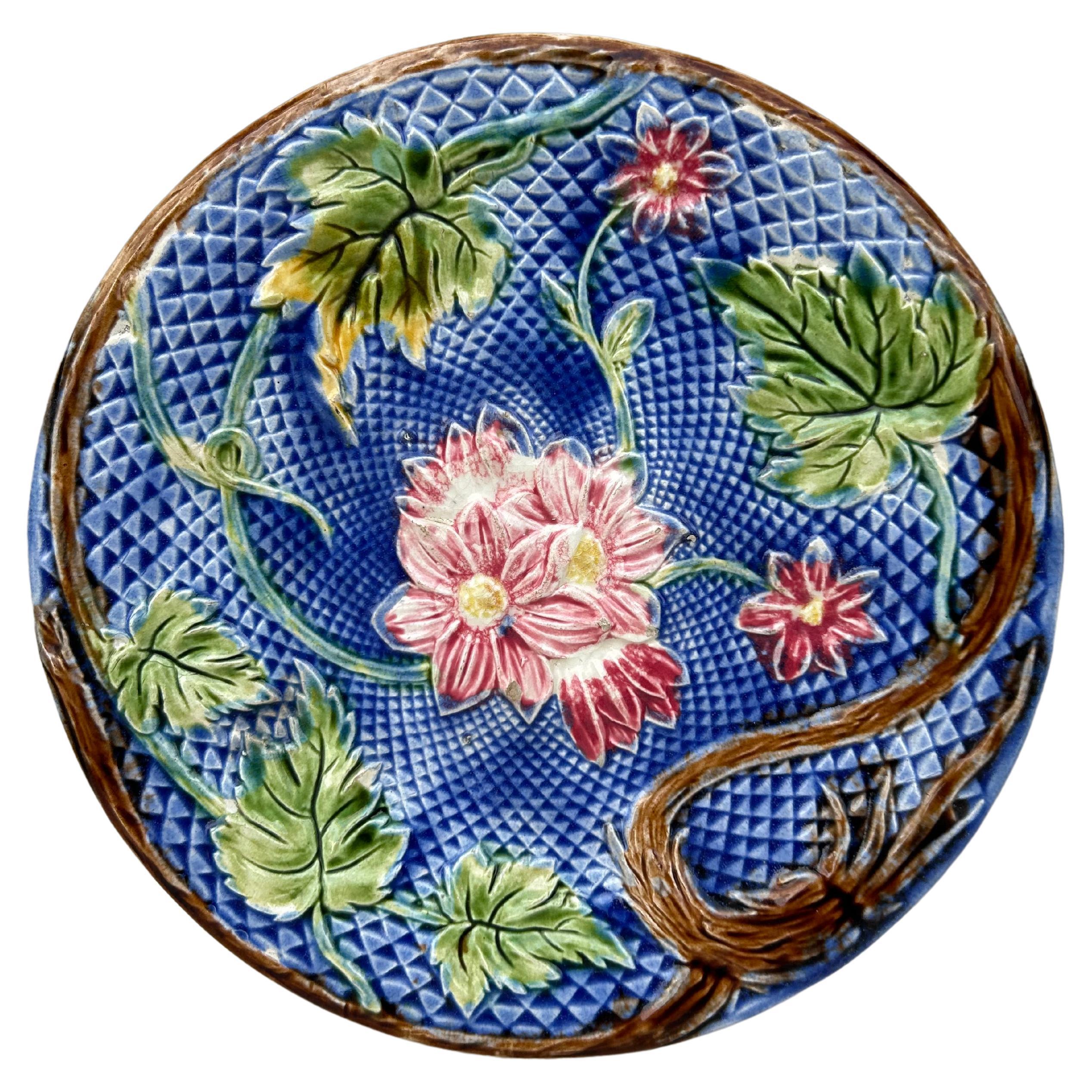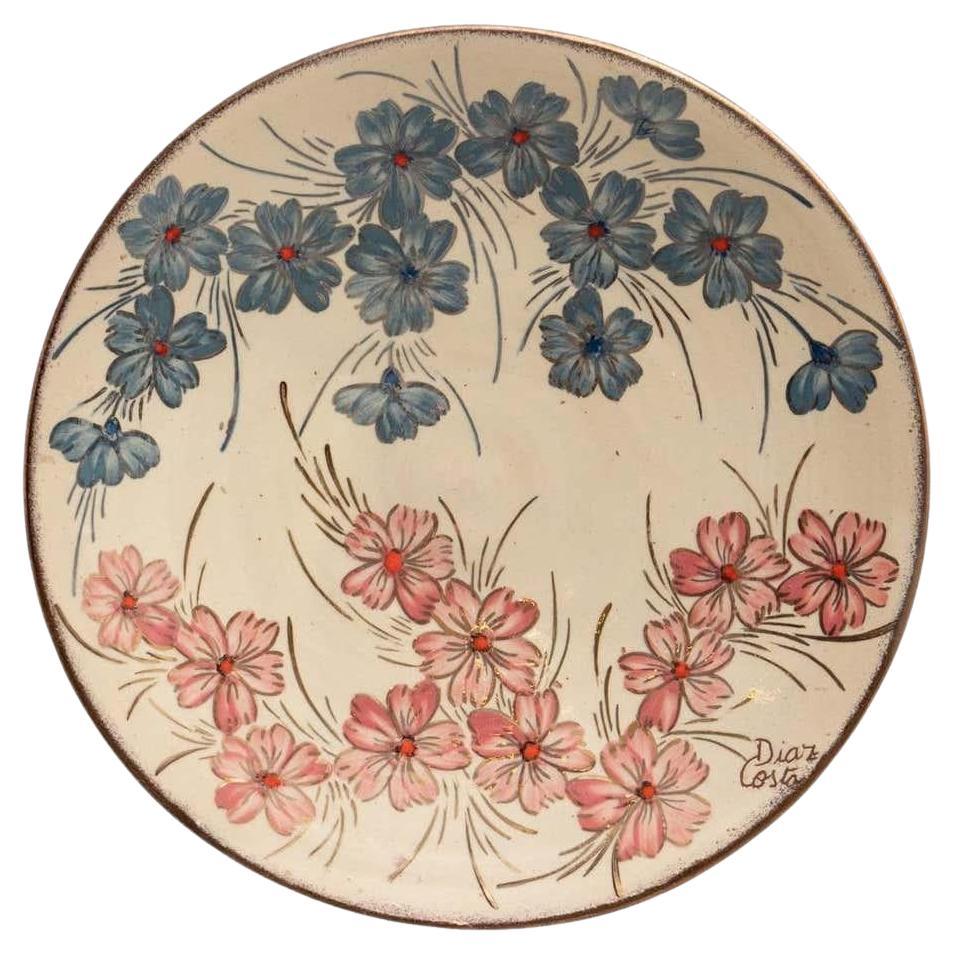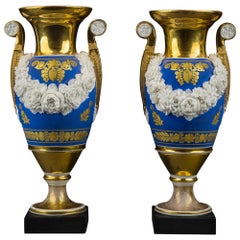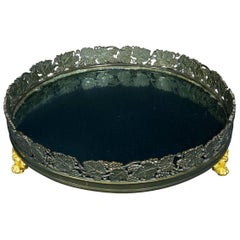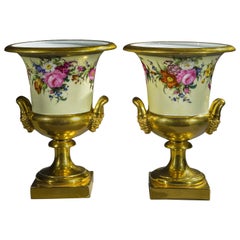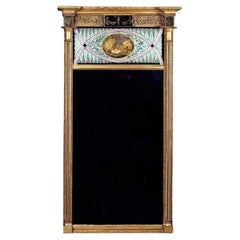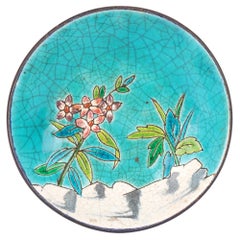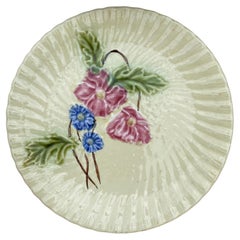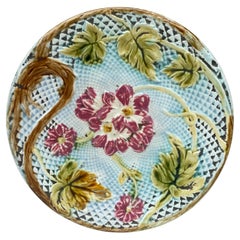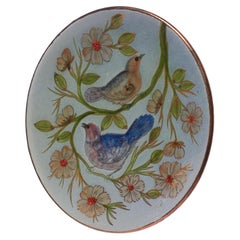Items Similar to Earthenware John Bennett Plaque with Pink and Blue Phlox
Want more images or videos?
Request additional images or videos from the seller
1 of 6
Earthenware John Bennett Plaque with Pink and Blue Phlox
$30,000
£22,536.84
€25,988.64
CA$41,628.91
A$46,258.91
CHF 24,240.16
MX$567,283.03
NOK 309,169.09
SEK 290,854.93
DKK 193,968.17
Shipping
Retrieving quote...The 1stDibs Promise:
Authenticity Guarantee,
Money-Back Guarantee,
24-Hour Cancellation
About the Item
FAPG 20247D
John Bennett (1840-1907), New York
Plaque with pink and blue phlox, circa 1881-1882
Earthenware, painted and glazed
Measures: 14 7/8 in. diameter, 1 13/16 in. high
Signed and inscribed (on the back): J B[monogram] ENNETT /
E 24 NY. / MC [or] CM
If the Herter Brothers was the most distinguished and successful cabinet making and decorating firm in New York in the 1870s-1880s, the transplanted Englishman John Bennett was probably the most gifted ceramicist working in New York in the Aesthetic period. (Bennett was included in The Metropolitan Museum of Art’s landmark exhibition, In pursuit of beauty: Americans and the Aesthetic Movement, in 1986–87, and Alice Cooney Frelinghuysen’s chapter, “Aesthetic Forms in Ceramics and Glass,” pp. 216–19, significantly informs this essay). Born in England, the son of a potter who worked in the Staffordshire district, Bennett came under the influence of John Sparkes, head of London’s Lambeth School of Art. Soon thereafter, he was hired by Henry Doulton of the eponymous firm to teach artisans there the new art of underglaze faience decoration, which was part of a revival of the sixteenth-century interest in hand-painted ceramics.
A number of Bennett’s works for Doulton were shown in the Doulton display at the Centennial Exposition in Philadelphia in 1876, and the considerable success enjoyed by Bennett and Doulton from an American audience undoubtedly played an important role in Bennett’s decision to leave Doulton and England and set up shop in New York in 1877. By the next year, he had already established a studio in New York, where he produced his own pottery in the tradition of the Arts & Crafts innovators, William Morris and William De Morgan, and also taught classes at the new Society of Decorative Art to the growing band of women who had taken up china painting, both professionally and avocationally.
Bennett’s pottery developed a very serious following among students and collectors, and was offered for sale at such leading retail establishments as Tiffany & Company in New York. Typically, his work was brilliantly colored, with carefully drawn naturalistic flowers against a monochromatic background.
Bennett’s fully developed American work, particularly pieces of larger scale, is exceedingly rare, as he worked in New York only from 1877 to 1883, in which year he withdrew to a farm in rural West Orange, New Jersey, where his production continued on a limited basis. He remained listed as a ceramicist there until 1889. While in New York City, Bennett maintained a studio at 412 East 24th Street. The present charger, boldly featuring pink and blue phlox, is signed by Bennett, and is inscribed “E 24 NY,” indicating its manufacture during Bennett’s time in New York. Although it is not dated, this piece is closely related stylistically to various dated pieces from 1881–82, which would place its production toward the end of Bennett’s New York years.
Although we do not know whether Bennett worked out of this 24th Street studio from the outset, he was indeed working there by 1879 when he made (and signed, inscribed, and dated) a charger with white and red flowers now in the collection of the Art Institute of Chicago, which specifically points to “412 East 24 / NY” (acc. no. 1998.317). Additionally, the U.S. Census of 1880 lists Bennett as a ceramicist located at that same address, married to Mary Bennett with whom he had had six children. There are several other examples from Bennett’s time in New York City, which also give his studio address on East 24th Street, including a covered jar in cadmium yellow with indigo and green flowers made in 1881; an undated footed vase with lilac decoration in the collection of the Museum of Fine Arts, Boston (acc. no. 2008.109); and a covered jar painted with peonies in yellow and white on a burgundy ground, also undated.
Condition: Perfect.
- Creator:John Bennett (Maker)
- Dimensions:Height: 1.82 in (4.63 cm)Width: 14.75 in (37.47 cm)Depth: 14.75 in (37.47 cm)
- Style:Aesthetic Movement (Of the Period)
- Materials and Techniques:Earthenware,Glazed
- Place of Origin:
- Period:
- Date of Manufacture:circa 1881-1882
- Condition:CONDITION: Perfect.
- Seller Location:New York, NY
- Reference Number:Seller: FAPG 20247D1stDibs: LU90326619803
About the Seller
No Reviews Yet
Recognized Seller
These prestigious sellers are industry leaders and represent the highest echelon for item quality and design.
Established in 1952
1stDibs seller since 2010
Associations
Art Dealers Association of America
- ShippingRetrieving quote...Shipping from: New York, NY
- Return Policy
Authenticity Guarantee
In the unlikely event there’s an issue with an item’s authenticity, contact us within 1 year for a full refund. DetailsMoney-Back Guarantee
If your item is not as described, is damaged in transit, or does not arrive, contact us within 7 days for a full refund. Details24-Hour Cancellation
You have a 24-hour grace period in which to reconsider your purchase, with no questions asked.Vetted Professional Sellers
Our world-class sellers must adhere to strict standards for service and quality, maintaining the integrity of our listings.Price-Match Guarantee
If you find that a seller listed the same item for a lower price elsewhere, we’ll match it.Trusted Global Delivery
Our best-in-class carrier network provides specialized shipping options worldwide, including custom delivery.More From This Seller
View AllPair of "Old Paris" Vases with Garlands of Bisquit Flowers
Located in New York, NY
French, circa 1820.
Porcelain, painted and gilded, with applied bisquit flowers
8 13/16 in. high.
Inscribed (with incised mark, under the base of each): 3.
Category
Antique 1820s French Neoclassical Porcelain
Materials
Porcelain
Plateau in the Restauration Taste with Grape and Leaf Motifs
Located in New York, NY
French.
Plateau in the Restauration taste with grape and leaf motifs, circa 1825.
Ormolu and patinated bronze, with mirror plate and wood backing.
Measures: 15 7/8 in. diameter, 3 11...
Category
Antique 1820s French Neoclassical Platters and Serveware
Materials
Bronze
Pair of Medici-Form Vases
Located in New York, NY
Attributed to Schoelcher, Paris, France, circa 1830.
Porcelain, painted and gilded.
16 1/4 in. high, 9 1/2 in. wide, 9 1/2 in. deep.
Ex Coll.: by repute, Joseph Bonaparte...
Category
Antique Mid-19th Century French Empire Porcelain
Materials
Porcelain
$25,000 / set
Pier Mirror with Églomisé Panels
Located in New York, NY
Pier mirror with Reverse Painted, or Eglomisé, Panels, about 1800
New York, New York
Eastern white pine, gessoed and gilded, with compo ornament, glass, reverse painted and gilded,...
Category
Antique Early 1800s American American Classical Pier Mirrors and Console...
Materials
Glass, Wood
Pair of Porcelain Urn Form Fruit Coolers with Covers and Liners
By Stône, Coquerel, and Legros d'Anisy
Located in New York, NY
Pair Footed Fruit Coolers, about 1810-20
Stône, Coquerel, and Legros D’Anisy, Paris (active 1808–49)
Porcelain, partially transfer printed in sepia and green and gilded
Each, 13 1/2 in. high x 10 in. wide x 7 1/2 in. deep
Signed and inscribed (on underside of one top and one base, with printed mark): STÔNE /
COQUEREL / ET / LE GROS / PARIS / PAR BREVET D’INVENTION: Manufre de Décors sur
Porcelaine Faience; variously inscribed with decorators’ initial in green and brown (on
underside of one top and one base): M; variously inscribed with incised mark (on underside of one liner and both bottoms): 3; inscribed (in blue script, on the inside of one liner): 615
The Parisian firm of Stône, Coquerel, and Legros d'Anisy is distinguished for the important role that it played in the introduction of transfer-printed decoration on fine china in France. Although the process had been known and used in Great Britain since the eighteenth century, it was, according to Régine de Plinval de Guillebon in her book, Porcelain of Paris 1770–1850 (New York: Walker and Company, 1972), not until 1802 that Potter, Blancheron, Constant, Neppel, Cadet de Vaux & Denuelle took out a patent in France for transfer-printing on earthenware, and it was only on February 26, 1808, that John Hurford Stône, his brother-in-law, Athanase Marie Martin Coquerel, and Francois Antoine Legros d'Anisy not only took out a patent for transfer-printing on china, but also established a Stône, Coquerel, and d'Anisy partnership for the manufacture of transfer-printed ceramics. Their address from 1808 until 1818 was at 9, rue de Cadran, Paris.
Prior to this, Stône and Coquerel had been partners at a creamware factory in Creil, France, and Legros d’Anisy had worked at the Sèvres factory, where he had apparently developed the transfer-printing technique for which his own firm became well known. “The process,” notes de Guillebon, was “based upon removing from the engraving a ‘pull’ made on a specially coated filter-paper, which was pressed onto the object to be decorated; this object itself was covered with a film. Firing took...
Category
Antique Early 19th Century French Neoclassical Wine Coolers
Materials
Porcelain
Monumental Overmantel or Pier Mirror in the Aesthetic Taste
Located in New York, NY
American, third quarter of the 19th century.
Pine, gessoed and gilded, with mirror plate.
Measures: 81 ½ in. high, 59 ½ in. wide.
Condition: Excellent. The gilding has been cleaned and very, very slightly inglided as necessary. The ball at the upper left was missing and has been replicated based upon...
Category
Antique 19th Century American Aesthetic Movement Pier Mirrors and Consol...
Materials
Mirror, Pine
You May Also Like
Longwy Early French Majolica Glazed Floral Landscape Pin Dish
By Faïenceries et Emaux de Longwy
Located in Bishop's Stortford, Hertfordshire
A stylish French majolica pottery pin dish decorated with flowering shrubs in a rocky landscape dating from the 19th century. The thickly potted dish is of si...
Category
Antique 19th Century French Arts and Crafts Pottery
Materials
Pottery
French Majolica Pink Flowers Salins, circa 1890
By Salins
Located in Austin, TX
French Majolica Pink Flowers Salins, circa 1890.
Category
Antique 1890s French Victorian Dinner Plates
Materials
Ceramic, Majolica
French Majolica Pink Flowers Salins, circa 1890
By Salins
Located in Austin, TX
Lovely French Majolica plate pink flowers on a blue basket weave, circa 1880 attributed to Salins.
Category
Antique 1890s French Rustic Dinner Plates
Materials
Ceramic
Ceramic Traditional Hand Painted Plate by Catalan Artist Diaz Costa, circa 1960
Located in Barcelona, ES
Immerse yourself in the artistic legacy of Catalan artist Diaz Costa with our vintage hand-painted ceramic plate artwork, circa 1960. This exquisite piece captures the essence of mid...
Category
Vintage 1960s Spanish Ceramics
Materials
Ceramic
French Majolica Pink Flowers Salins, circa 1890
By Salins
Located in Austin, TX
Lovely French Majolica plate pink flowers on a blue basket weave, circa 1880 attributed to Salins.
Very rare color.
Category
Antique 1890s French Rustic Dinner Plates
Materials
Ceramic
Ceramic Traditional Hand Painted Plate by Catalan Artist Diaz COSTA, circa 1960
Located in Barcelona, ES
Ceramic hand painted plate artwork by Catalan artist Diaz COSTA, circa 1960. In original condition, with minor wear consistent of age and use, preserving a beautiful patina. Si...
Category
Vintage 1960s Spanish Mid-Century Modern Ceramics
Materials
Ceramic
More Ways To Browse
Tiffany Glass Blue
Chicago Silver Company
Glass Peony
Glass Head Orange
Chinese Pink Glaze
Pottery Plaque
Pink And White Antique China
Green Cabinet With Flowers
Staffordshire Earthenware
Blue White Staffordshire
Antique Silver Boston
Large Antique Glass Jar
Tiffany China
Antique American Glaze Pottery
Pink Charger
Silver China Cabinet
Green Chinese Cabinet
Museum Glass Display Cabinet
